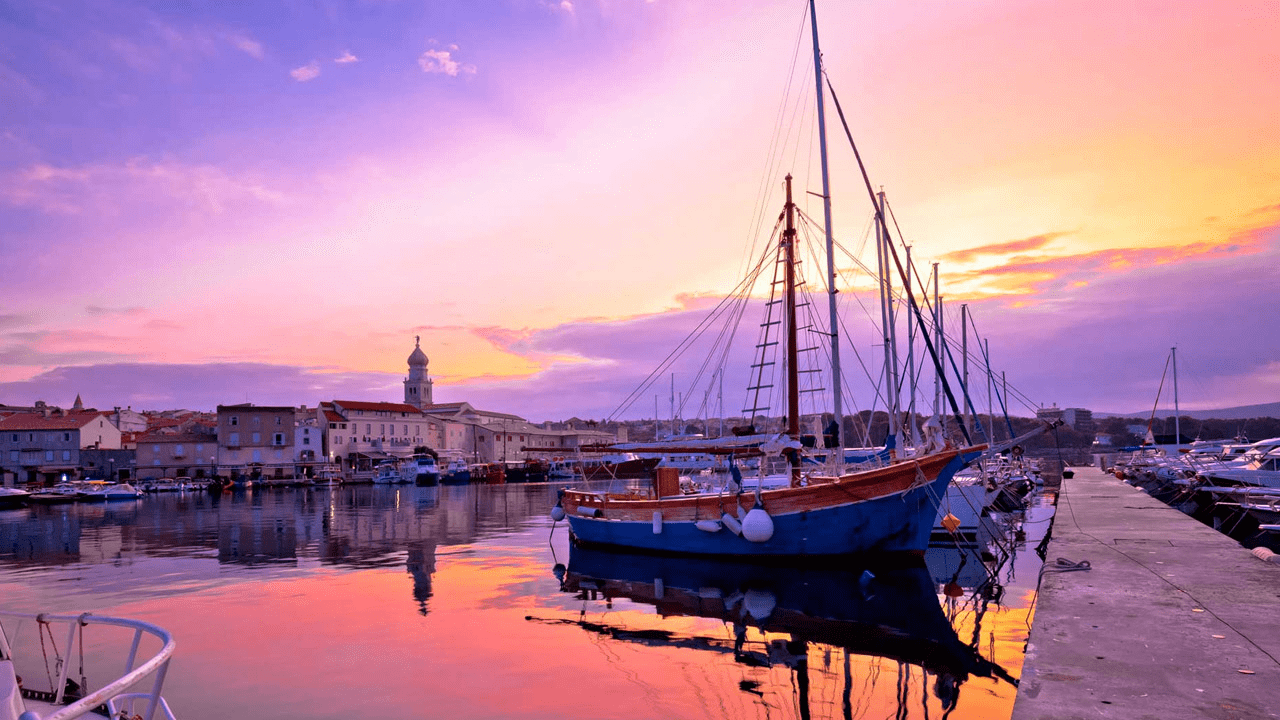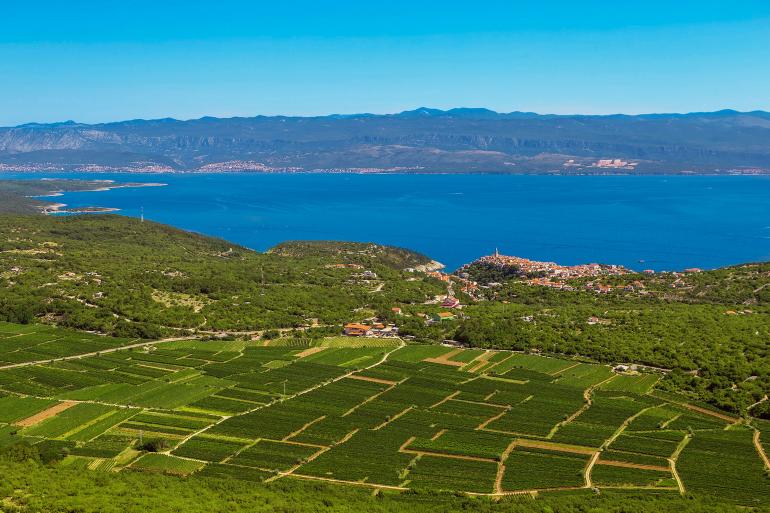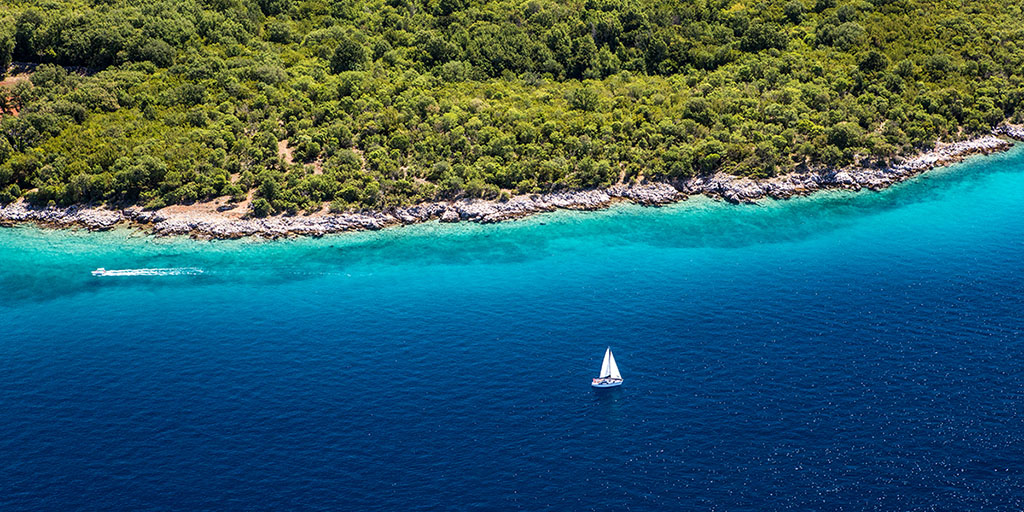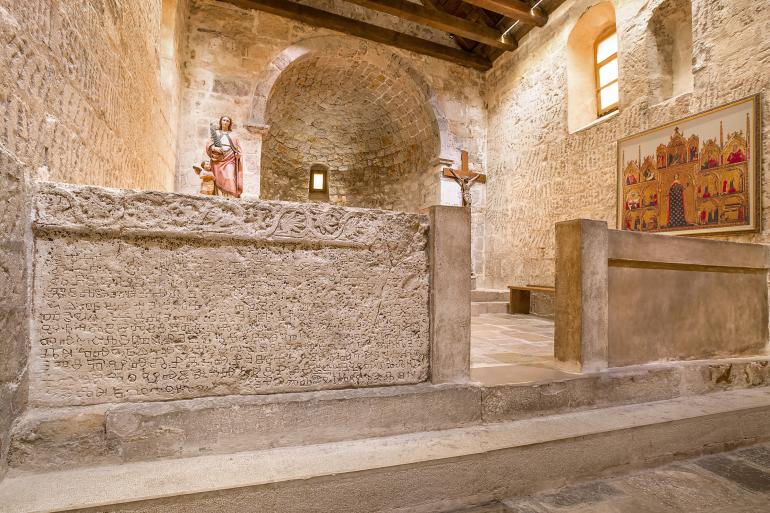golden island...
KRK
The island of Krk is the first Adriatic island that you'll encounter when coming from the north. It is located in Kvarner Bay and was known in Roman times as Insula aurea – the Golden Island. Krk is the ideal destination for all those who want to enjoy a holiday on an island but who also want to avoid long journeys and ferry rides. This is possible because Krk is easily accessible from the mainland via Krk Bridge, from the sea by boat or by ferry to the harbour of Valbiska, and by plane to Rijeka International Airport, which is located close to Omišalj.
Get to know the beauty of the island of Krk
The pearl of the Adriatic
Get to know the beauty of the island of Krk through its rich history and diverse natural beauty.
Culture and heritage
Explore the cultural wealth of the island of Krk through centuries of heritage, museums and monuments.
Wine heaven
Taste the magic of Krk wines through wine tours and tastings at beautiful vineyards.
Natural oasis
Discover the untouched beauty of the island of Krk through its beaches, coves and forest paths.
Health and wellbeing
Relax and refresh your body in the healing mud and crystal clear sea of the island of Krk.

Cradle of Croatian culture
There is a popular belief that the destiny of the island of Krk is connected to the number 7. Indeed, it was inhabited by the Croats in the seventh century, was successfully defended from pirates seven times, the seventh prince from the Frankopan family was the last prince of Krk, and today the island has seven urban centres. Thanks to its exceptional cultural heritage, above all its Glagolitic monuments, including the famous Baška Tablet, Krk is also known as the 'cradle of Croatian culture'.
The island's landscape is particularly varied and includes quaint coves and valleys, fertile fields and thick forests with sub-Mediterranean vegetation, but also barren karst landscapes and mountainous areas, including (570 m), the highest peak on the island. Krk is known for its karst ponds, a unique phenomenon created both naturally and by human activity. These can be explored by following a new educational trail.
Diverse range
The island of Krk invites you to get to know it in every season: discover its diverse places and visit thousand-year-old monuments, museums and galleries. Breathe in health by walking along romantic promenades by the sea or on wild shepherd's paths in the rocky mountains. Enjoy the magical flavors of Krk cuisine and local wine. An unforgettable stay is guaranteed by a variety of accommodation, tourist and hospitality offers.
Krk Island beckons you to discover its captivating beauty throughout the year. Embark on a journey to uncover its diverse landscapes, where ancient monuments, museums, and galleries stand as testaments to its rich history. Inhale the invigorating scent of the sea as you stroll along romantic coastal paths or venture into the rugged trails of the island's shepherds. Indulge in the tantalizing flavors of Krk's cuisine and savor the taste of locally produced wines. Your unforgettable stay is guaranteed by the island's diverse range of accommodations, tourist attractions, and culinary delights.
Local winemakers invite you to savor their white, red, and rosé wines throughout the year, along with the renowned sparkling wine Valomet, which matures at the bottom of the sea. Embark on cycling adventures through the vineyards or leisurely walks along the hiking trails of Vrbnik's hills. Discover the island's breathtaking flora and fauna and relish the panoramic views of the Velebit Channel.
Krk Island promises an unforgettable experience, catering to every traveler's desire. Whether you seek cultural immersion, culinary delights, or outdoor adventures, Krk has something to offer everyone. Let the island's timeless beauty and warm hospitality captivate you, creating memories that will last a lifetime.


Dubašnica
In a spacious bay between capes Ćuf and Pelov on the northwestern side of Krk island lies Malinska, which, together with its twenty scattered surrounding villages, forms the historical region known as Dubašnica. The most significant natural treasures of this area are the unique power and beauty of the sea and the holm oak forests. Due to its rich mediterranean vegetation, favorable geographical position, warm sea, and abundance of sunshine, the Malinska and surrounding area (Dubašnica) enjoys a very favorable climate and boasts the most pleasant climate on the entire island of Krk.
Bašća plaque and medicinal mud
The Baška Tablet holds immense historical significance for the entire Croatian nation as it is the oldest Croatian monument written in the Glagolitic script, dating back to the 11th century, nearly four centuries before the discovery of America. Seek out the Church of St. Lucia in Jurandvor near Baška, where a replica of the tablet is currently housed.
The original left tablet from 1100 measures 194 x 93 cm, is 8 cm thick, and weighs around 800 kg. The text is inscribed in 13 rows. The tablet has long been cracked into three unequal parts. Its importance lies in its status as the earliest known monument to mention the name of a croatian king, and it does so in the croatian language. The text is written in the high style of contemporary charters. It is a legal document by which Zvonimir grants some land to the Benedictines.
The tablet made its way to the Croatian academy of sciences and arts in Zagreb in 1934, where it underwent a thorough restoration that removed salt deposits. It is kept in the HAZU building and is open for viewing by all visitors.
The healing mud at Meline Beach in Soline is well-known and draws many visitors from early spring to late autumn. Every day, you'll see hundreds of bathers covered in a thick layer of mud. Due to the shallow sea, sunbathing and swimming begin here as early as spring, and it is believed that the mud and sun on the body have healing properties for bone and rheumatic diseases.
The healing mud on Meline beach in Soline is famous and attracts many visitors from early spring to late autumn. Every day you will see hundreds of bathers covered in a thick layer of mud. Due to the shallow sea, the first sunbathing and swimming starts here already in the spring, and it is believed that the mud and the sun on the body cures bone pain and rheumatic diseases.
